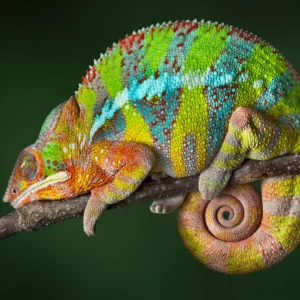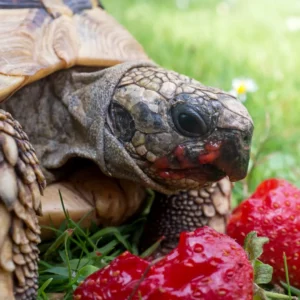Blog
Feeding Snakes: Frozen VS Live Prey
One critical decision every snake owner faces is whether to feed snakes frozen or live prey. In this guide, we’ll explore the pros and cons of each feeding method, provide insights into preparation and safe feeding practices, and address potential safety concerns associated with both options.
Feeding Snakes: Frozen vs. Live Prey
Frozen Prey:
Pros:
- Safety: Frozen prey poses minimal risk of injury to your snake during feeding.
- Convenience: Easily stored and readily available, eliminating the need for live prey maintenance.
- Disease Prevention: Frozen prey is less likely to carry parasites or diseases, reducing the risk of transmission to your snake.
Cons:
- Instinctual Stimulation: Some snakes may prefer the movement of live prey to stimulate their hunting instincts.
- Preference: Certain snake species may be more reluctant to accept frozen prey, requiring a transition period.
Live Prey:
Pros:
- Natural Stimulation: Live prey provides a more natural hunting experience for snakes, promoting mental and physical health.
- Appetite Stimulation: The movement of live prey can entice snakes to eat, especially those that are picky eaters.
- Environmental Enrichment: Hunting live prey can be a stimulating and enriching activity for your snake.
Cons:
- Injury Risk: Live prey can pose a risk of injury to the snake, as the prey may defend itself.
- Disease Transmission: Live prey may carry diseases or parasites, which could be transmitted to the snake.
- Availability and Cost: Live prey may be less convenient and more expensive to source regularly.
Preparing and Feeding:
Frozen Prey:
- Thawing: Thaw frozen prey thoroughly in a refrigerator to room temperature before feeding snakes.
- Warmth: Use tongs to present the thawed prey to the snake, ensuring it reaches an appropriate temperature to stimulate interest.
Live Prey:
- Source from Reputable Breeders: Purchase live prey from reputable breeders to minimize the risk of disease transmission.
- Feeding Enclosure: Place the live prey in a separate feeding enclosure to minimize injury to the snake.
Safe Feeding Practices and Concerns:
- Feeding Enclosure: Utilize a designated feeding enclosure to prevent accidental bites from your snake during feeding.
- Supervision: If feeding live prey, closely supervise the feeding process to ensure the snake’s safety.
- Tail Safety: Avoid presenting the prey directly from your hand to prevent accidental bites.
Types of Prey and Nutritional Benefits:
Suitable Live Prey for Feeding Snakes
Mice and Rats: These are the most common prey items for many captive snakes. They should be size-appropriate for the snake to avoid choking or injury.
Chicks: For some larger snake species, day-old chicks can be an appropriate part of their diet.
Quail: Similar to chicks, suitable for larger snakes and can provide variety.
Gerbils and Hamsters: These can be suitable for some snakes, but are generally not as commonly used as mice or rats.
Small Rabbits: For very large snake species, like certain pythons and boas, rabbits may be appropriate.
Frogs and Toads: Suitable for some species of snakes that naturally prey on amphibians. Care must be taken to ensure they are safe and not toxic to the snake.
Small Lizards: Some snakes naturally prey on other reptiles and may accept small lizards as part of their diet.
Non-Suitable Live Prey for Feeding Snakes
Wild-Caught Prey: Wild animals can carry parasites and diseases, making them unsuitable and risky as live prey.
Birds (Other than specified): Many birds are too large, can injure the snake, or may carry diseases.
Large Mammals (Other than specified): Larger mammals are not suitable for feeding snakes and can cause serious harm to the snake.
Venomous or Poisonous Animals: Prey that could potentially harm or kill the snake should never be offered.
Insects: Most snakes do not eat insects, so they are generally not suitable for feeding snakes.
Endangered or Protected Species: It’s illegal and unethical to use these as prey.
Pets or Domestic Animals (Cats, Dogs, etc.): Using pets or domestic animals as prey is unethical and potentially illegal.
Conclusion:
Feeding snakes frozen or live prey doesn’t have to be a difficult decision, you should feed what you feel is best for you and your snake. Choosing between frozen and live prey for your snake involves weighing various factors, from safety to nutritional benefits. Consider your snake’s species, individual preferences, and any specific health concerns. Whether opting for the convenience of frozen prey or the natural stimulation of live prey, maintaining a balance between safety and nutritional value is key to promoting your snake’s optimal health. Regularly assess and adapt your feeding practices based on your snake’s behavior and needs for a happy and thriving serpent companion.
CLICK HERE to use our Snake Nutrition Calculator, master your Snake’s nutrition today!



